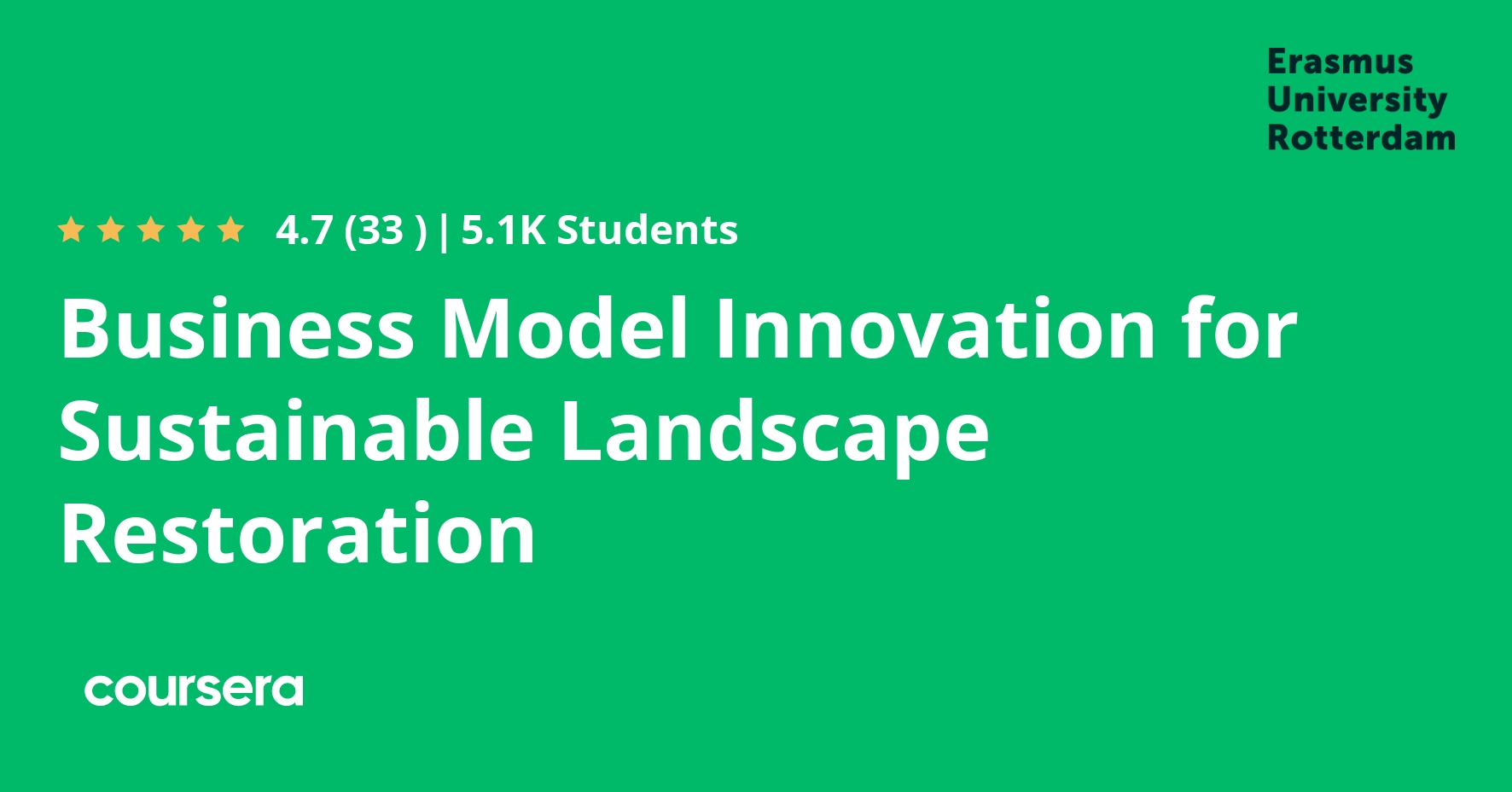Description
Land degradation is a widespread problem across the globe with serious consequences for the environment and all of society. Worsening land degradation caused by human activities is undermining the well-being of two-fifths of humanity, driving species extinctions and intensifying climate change. But there’s a huge potential for restoring landscapes: around two billion hectares of land, about two times the size of China, can be restored.
In this MOOC we focus on the potential of business model innovation for the challenge of large-scale landscape restoration. We take a partnership approach and make a bridge between ecology and economy. Learners get to design their own innovative business model for landscape restoration with 4 returns: return of natural capital, return of social capital, return of inspiration and return of financial capital. You move from ideation towards successful implementation. Each step is illustrated with three real-life cases of landscape restoration in Spain, Iceland and Portugal.
We highlight the following elements over a period of 8 weeks:
1. Vision Formulation
2. Systems Analysis
3. Stakeholder Analysis
4. Opportunity Analysis
5. Business Model Design
6. Solution Validation
7. Assessment & Monitoring
8. Reflection & Iteration
This MOOC provides you with a meaningful opportunity to start contributing to the UN Decade on Ecosystem Restoration (https://www.decadeonrestoration.org/ ), which aims to prevent, halt and reverse the degradation of ecosystems on every continent and in every ocean. Your participation is more relevant now than ever!
This MOOC builds on the MOOC “A Business Approach to Sustainable Landscape Restoration” but can also be followed as a stand-alone. In the first MOOC you get comprehensive knowledge of landscape degradation and landscape restoration from both the perspective of natural science and from an economics and management perspective. (https://www.coursera.org/learn/landscape-restoration-sustainable-development/home/welcome )
These MOOCs are designed by ENABLE, a consortium of: Erasmus University Rotterdam, Commonland, United Nations University Land Restoration Training Programme, Spanish National Research Council (CSIC-CEBAS), and Nova School of Business & Economics. ENABLE was co-funded by the Erasmus+-programme of the European Union.
What you will learn
Vision Formulation
Welcome to this 8-week course on ‘Business model innovation for sustainable landscape restoration’! Your teachers will introduce you to the process of business model innovation, the concept of landscape restoration and to 3 real-life cases of landscape restoration projects. For each step of the innovation process, we zoom in on those landscapes to show you how the theory looks in practice. By doing this, you will apply the “4 returns” thinking (returns of inspiration, natural capital, social capital and financial capital). Week 1 introduces you to the problem of landscape degradation and the process of landscape restoration. You will also learn about the role of business models in landscape restoration and how important visions are for sustainable business model innovation. We will introduce you to our 3 practical example cases of landscape restoration. Each of these cases has encountered different problems related to landscape degradation and formulated innovative solutions by using the approach set out in this MOOC: the power of sustainable business models to successfully restore natural environments. You will choose a land degradation challenge and formulate a vision and key question.
Systems Analysis
Week 2 is all about systems thinking and systems analysis. In our practical example cases you will see how diversified crop systems can help in Spain, and how birch woodlands can improve the resilience of the system in Iceland. You will learn how to conduct a systems analysis for your chosen landscape degradation challenge by identifying boundaries and key factors, creating a system map, constructing a central narrative and determining points of intervention.
Stakeholder Analysis
In this week you will learn what stakeholders are and why they are important. You will see the application of the main concepts in two of our landscape examples. At the end of week 3 you can conduct your own stakeholder analysis of your chosen landscape degradation challenge.
Co-Creation and Opportunity Analysis
In week 4 we enter the second phase of the sustainable business model innovation process: designing. In this phase we move from forming an understanding of the problem and what means we have available, to generating ideas for new business model solutions. Now you will actually start working with your stakeholders to analyse opportunities for value creation based on common goals and commitment. In week 4, the focus is on co-innovation networks and captured and destroyed value. You are going to build your co-innovation network, validate your current understandings, identify opportunities to add value and generate first business model ideas.






